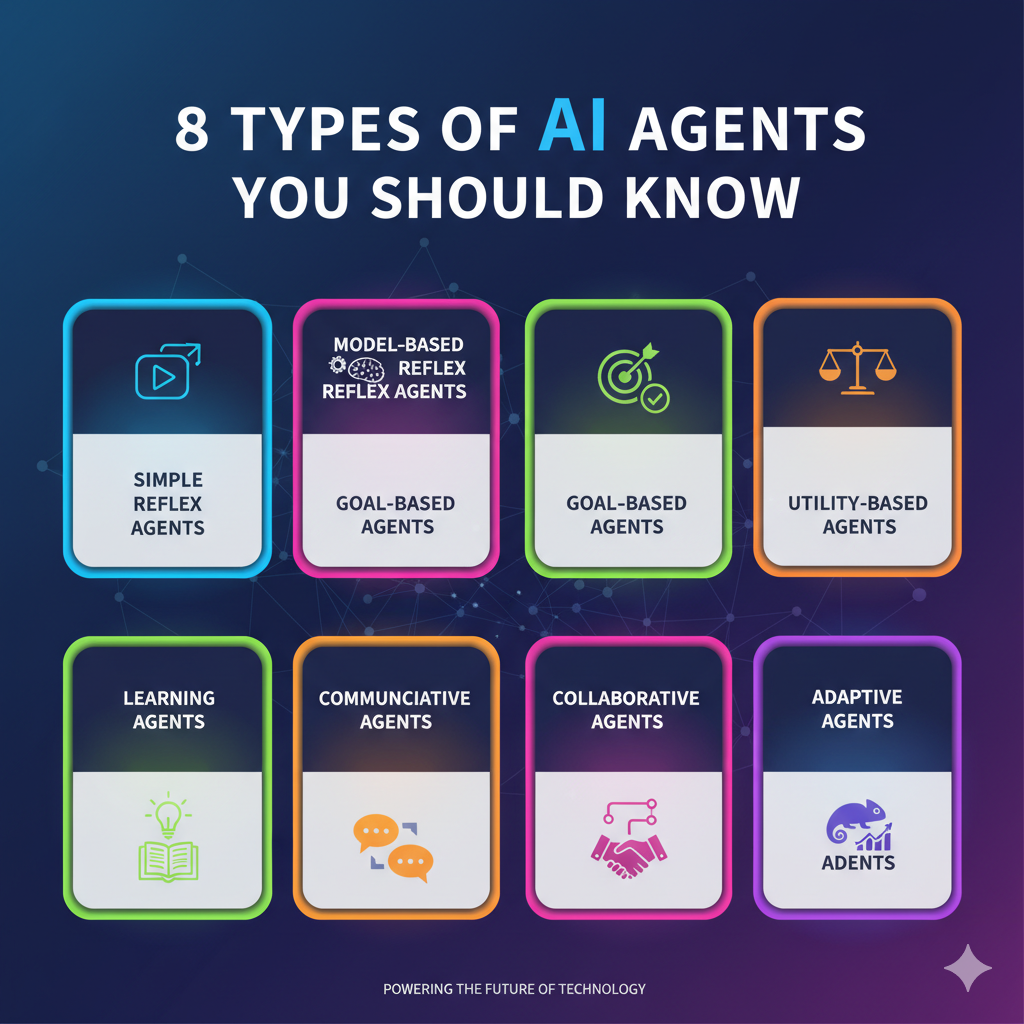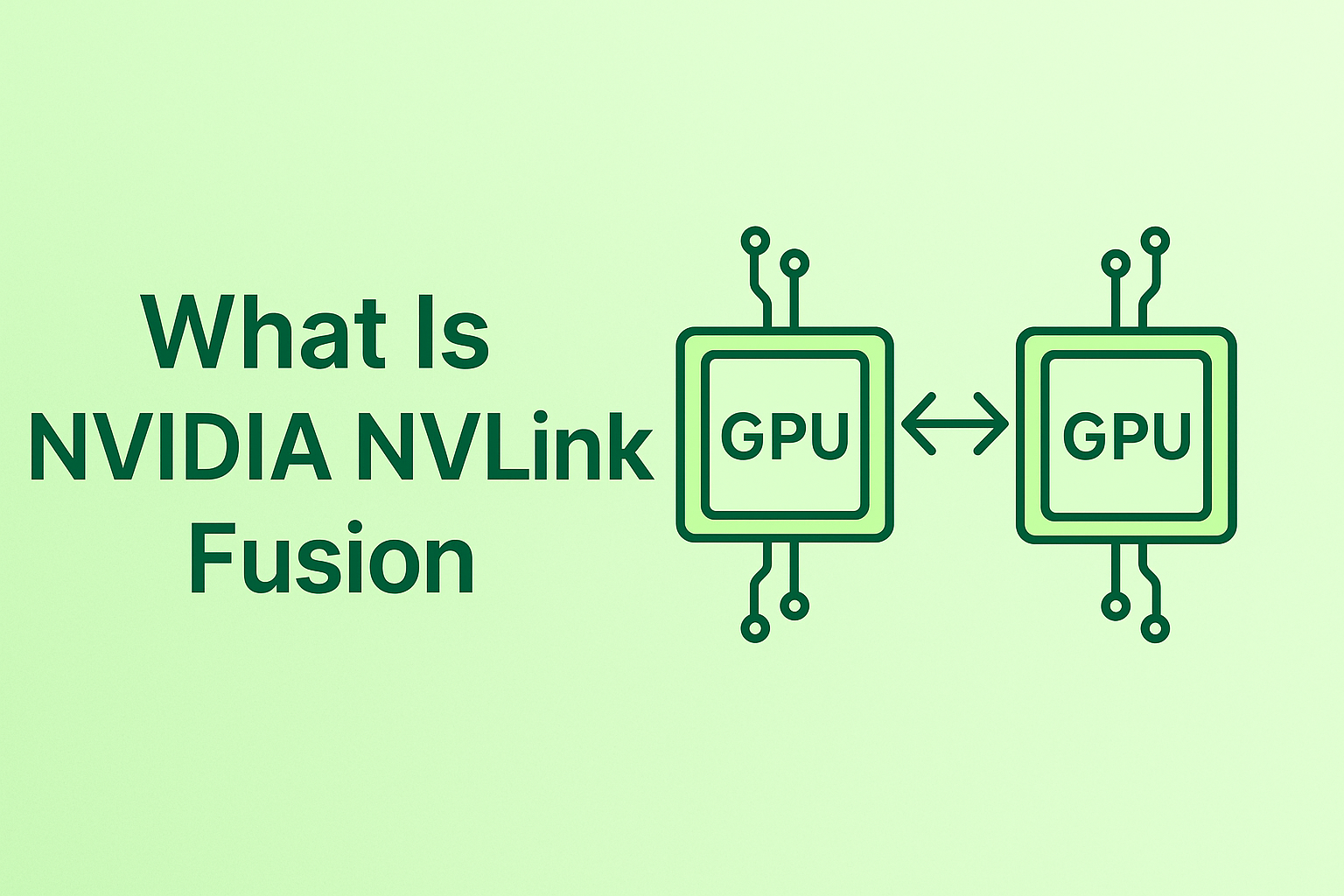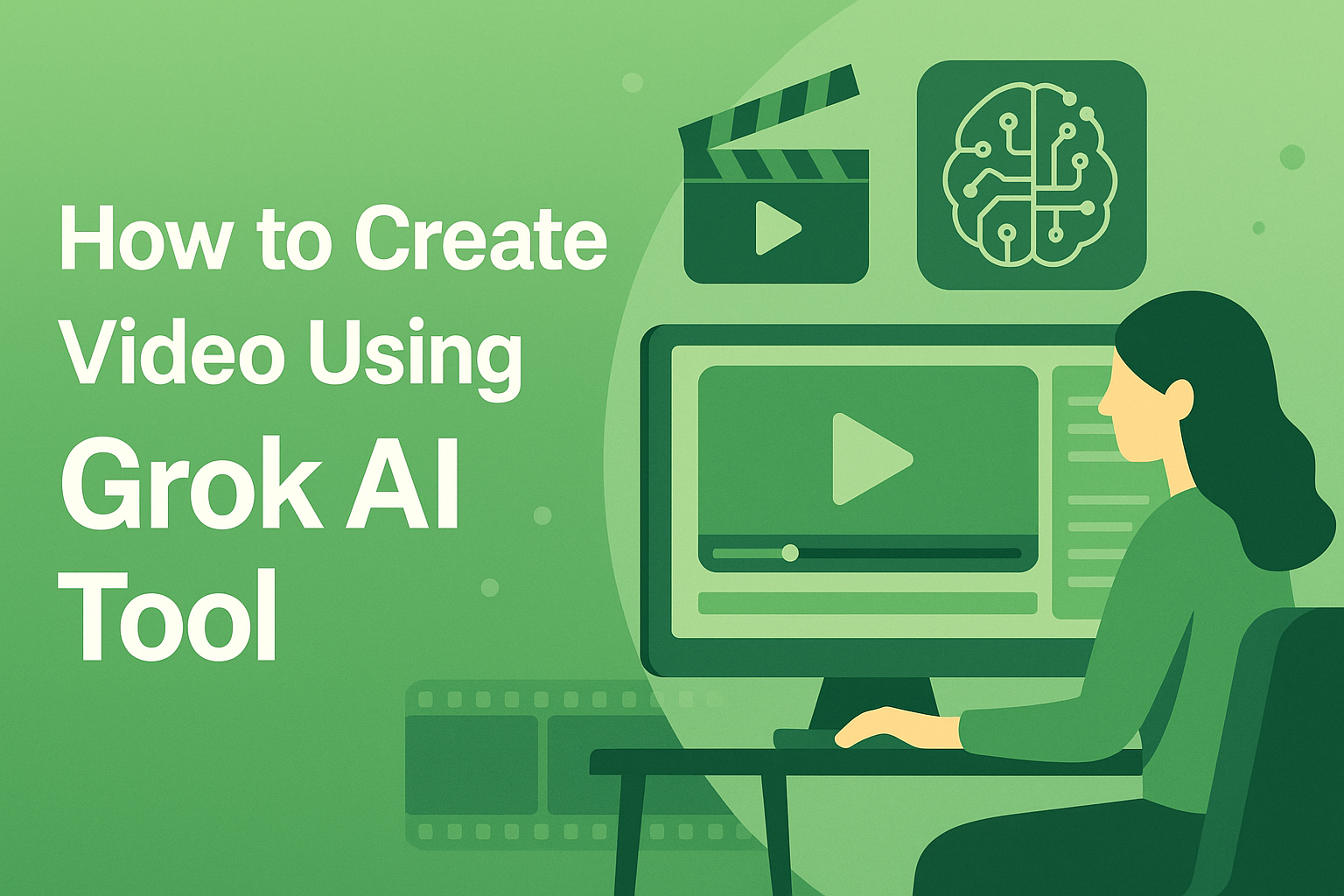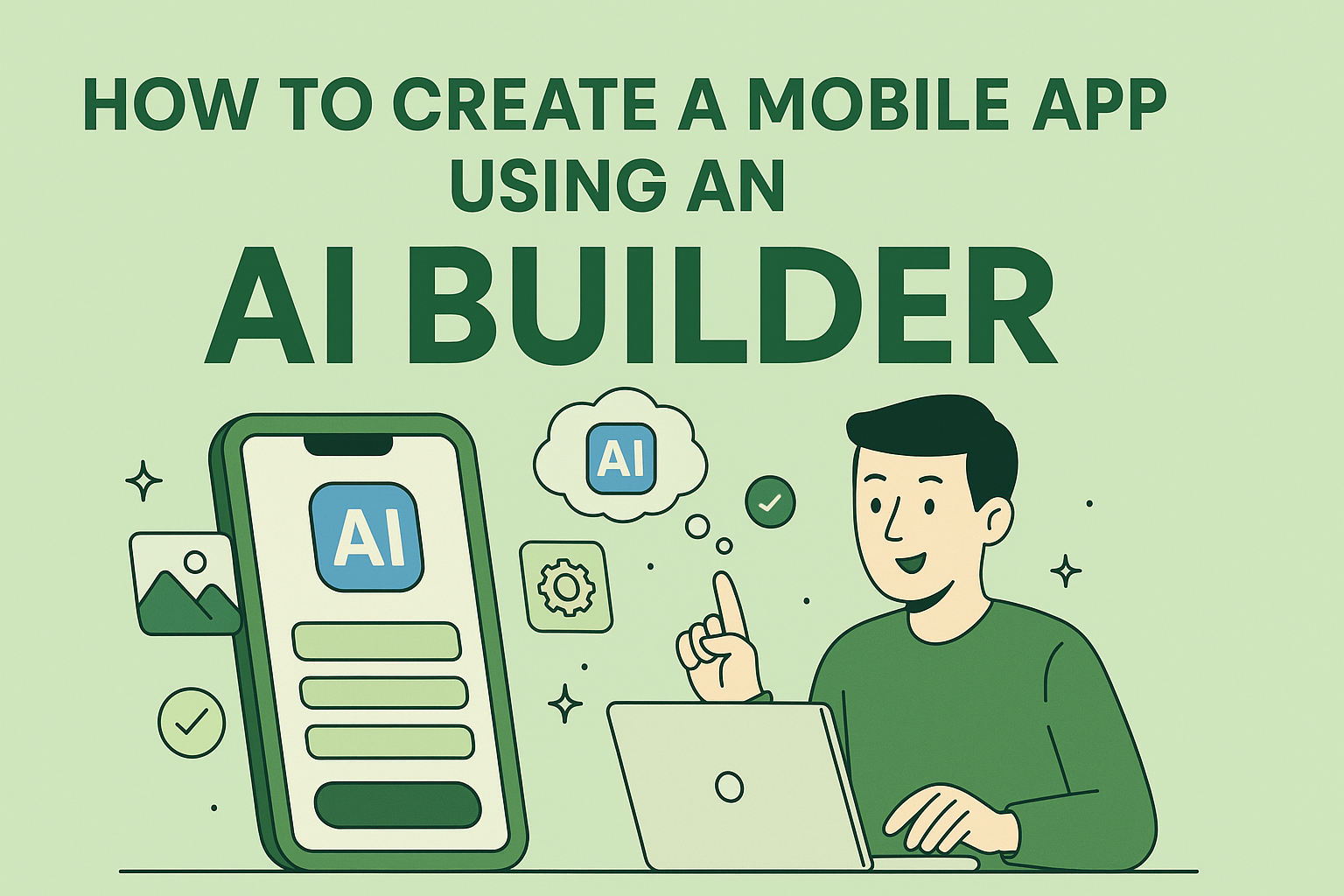If you’ve been following the rapid developments in artificial intelligence, you’ve probably heard people talk about “AI agents.” But what exactly does that mean?
Think of an AI agent as a digital entity that acts it perceives information, processes it, and makes decisions based on that data. Whether it’s a chatbot answering customer queries, a self-driving car navigating traffic, or a smart assistant adjusting your thermostat, all of these are powered by some form of AI agent.
But here’s the interesting part not all AI agents are built the same way. They come in different types, each designed for specific levels of intelligence, autonomy, and purpose.
In this blog, we’ll explore 8 Types of AI Agents You Should Know, what makes each unique, and where you might encounter them in daily life or business applications.
What Are AI Agents?
Before diving into the types, let’s get one thing straight: an AI agent is more than just an algorithm. It’s an entity that can perceive its environment, reason through data, and act upon it to achieve goals, sometimes with feedback loops to learn and adapt.
To put it simply:
Input → Processing → Action → Feedback → Improved Action
Every AI agent follows this pattern in some form. The differences lie in how they process data and how independently they act.
Now, let’s break down the main types of AI agents that define the landscape of intelligent systems today.
1. Simple Reflex Agents
The simplest form of AI agents, these operate purely on condition–action rules. They don’t store past experiences or learn from them they simply respond to what they perceive right now.
Think of them like “if-then” machines:
- If the light is red → stop.
- If the temperature drops below 18°C → turn on the heater.
They’re quick, predictable, and useful for basic automation tasks, but they can’t handle situations that require memory or contextual understanding.
Example:
- Automatic door sensors that open when someone walks up.
- Basic game AI (like the ghosts in early Pac-Man games).
Best suited for:
- Static environments where rules don’t change frequently.
2. Model-Based Reflex Agents
Now we step up a level. Model-based reflex agents use internal models to understand and predict the world.
They don’t just react blindly — they maintain a representation of the environment that helps them handle situations even when not all information is visible.
For example, a robot vacuum doesn’t need to see every wall to know where it’s located. It remembers the layout from previous runs.
Example:
- Roomba smart vacuums map rooms.
- Industrial robots that navigate factory layouts.
Best suited for:
- Dynamic or partially observable environments where conditions change often.
3. Goal-Based Agents
Goal-based agents are smarter still they don’t just respond or predict; they plan.
These agents have specific objectives they’re trying to achieve and evaluate different actions to see which one brings them closer to that goal.
Instead of blindly turning left or right, a goal-based agent asks:
“Which move will get me closer to my target?”
This involves a lot of reasoning and sometimes even pathfinding algorithms.
Example:
- GPS navigation systems calculating optimal routes.
- AI opponents in strategy games making tactical decisions.
Best suited for:
- Problem-solving environments that require decision-making or planning.
4. Utility-Based Agents
While goal-based agents focus on achieving goals, utility-based agents add another layer: evaluating how desirable each outcome is.
They don’t just want to succeed, they want to succeed optimally.
In real-world terms, if there are multiple ways to reach a destination, a utility-based agent will choose the one that saves the most time, fuel, or cost, depending on its “utility function.”
Example:
- Self-driving cars balance safety, comfort, and efficiency.
- Financial trading bots maximise profit while minimising risk.
Best suited for:
- Complex, dynamic systems with multiple possible outcomes.
5. Learning Agents
Now things get interesting, learning agents can improve themselves over time.
They have four key components:
- Learning element – discovers patterns or insights from data.
- Performance element – executes actions.
- Critic – evaluates how well the actions worked.
- Problem generator – suggests new approaches to explore.
This feedback loop helps the agent adapt and make smarter choices as it gains experience.
Example:
- ChatGPT-style assistants are learning user preferences.
- AI in video games that adapts to player behaviour.
Best suited for:
- Environments where feedback is available and improvement is ongoing.
6. Multi-Agent Systems
So far, we’ve discussed individual agents. But what if multiple AI agents work together communicating, collaborating, or even competing? That’s where multi-agent systems (MAS) come in.
These systems involve two or more agents interacting within a shared environment to achieve collective or individual goals.
For instance, in a traffic management system, multiple agents (representing cars or signals) communicate to maintain smooth traffic flow.
Example:
- Smart grid systems balance power distribution.
- Autonomous drones coordinating flight paths.
Best suited for:
- Environments requiring collaboration, negotiation, or resource optimization.
7. Agentic AI (Autonomous or Cognitive Agents)
This is the cutting edge — the kind of AI that’s starting to blur the line between automation and genuine autonomy.
Agentic AI can operate independently, make decisions without direct input, and often combine reasoning, planning, and learning. These systems are capable of handling open-ended tasks and adapting to new challenges.
They can even create new goals based on context — for example, prioritising urgent tasks over routine ones.
Example:
- AI systems managing cloud infrastructure without human input.
- Virtual assistants that execute multi-step tasks (book meetings, summarize reports, reply to emails).
Best suited for:
- Complex ecosystems like business automation, logistics, or intelligent software engineering.
8. Hybrid Agents
Hybrid agents combine multiple architectures to get the best of all worlds.
For instance, a hybrid system might have:
- A reactive layer for immediate responses.
- A deliberative layer for planning and reasoning.
- A learning layer for continuous improvement.
This layered approach allows flexibility and scalability making hybrid agents suitable for real-world, unpredictable environments.
Example:
- Self-driving cars combine perception, planning, and decision modules.
- Intelligent virtual assistants that mix scripted logic with learning-based conversation models.
Best suited for:
- Any large-scale system requires both quick reflexes and long-term reasoning.
Understanding the Evolution of AI Agents
To truly appreciate these 8 types of AI agents, it helps to view them as stages in an evolutionary journey:
| Stage | Type | Key Feature | Example |
|---|---|---|---|
| 1 | Simple Reflex | Reacts to stimuli | Door sensors |
| 2 | Model-Based Reflex | Keeps internal model | Cleaning robots |
| 3 | Goal-Based | Plans actions | GPS systems |
| 4 | Utility-Based | Evaluates best outcome | Self-driving cars |
| 5 | Learning | Improves over time | Adaptive chatbots |
| 6 | Multi-Agent | Works collaboratively | Drone fleets |
| 7 | Agentic AI | Acts autonomously | AI copilots |
| 8 | Hybrid | Combines multiple architectures | Smart assistants |
Each type builds upon the last from simple rule-following systems to autonomous, reasoning-driven agents capable of managing entire workflows.
How These Types of AI Agents Shape the Real World
Let’s bring this down to earth with a few real-world examples:
- Customer Support:
Chatbots (learning agents) powered by large language models handle thousands of support queries daily, adapting to user tone and intent. - Healthcare:
AI agents analyse X-rays, monitor vitals, and even assist in diagnosis — goal-based and utility-based agents working hand in hand. - Finance:
Trading bots use utility-based reasoning to decide when to buy or sell, balancing risk and reward dynamically. - Autonomous Systems:
Drones, robots, and vehicles use hybrid architectures for navigation, obstacle avoidance, and decision-making.
Each of these examples shows how different types of AI agents come together to create intelligent, adaptive systems that go far beyond basic automation.
Challenges in Designing AI Agents
Of course, creating AI agents isn’t without challenges. Developers must consider:
- Ethical boundaries – ensuring AI decisions remain transparent.
- Security risks – preventing misuse or unintended behaviour.
- Bias in learning models – avoiding skewed outcomes from biased data.
- Resource management – balancing performance with computational cost.
The smarter the AI, the more critical it becomes to build safeguards and human oversight into the system.
Why Understanding These Types of AI Agents Matters
Knowing the different types of AI agents helps you understand not only how AI systems work but also how to use them effectively.
If you’re in business, it helps you choose the right AI solution for automation, customer engagement, or process optimization.
If you’re a developer, it helps you design smarter, scalable systems.
And if you’re just curious, it helps you appreciate how much intelligence goes into even the simplest AI-driven task.
From rule-based chatbots to autonomous agents that think for themselves understanding these layers of intelligence gives you a better picture of where AI is headed next.
The Rise of Intelligent, Adaptive Systems
The journey from simple reflexes to agentic intelligence shows just how far AI has come. Each step introduces more awareness, reasoning, and independence bringing us closer to machines that can collaborate rather than just compute.
Whether you’re building software, managing teams, or simply exploring technology, understanding these 8 types of AI agents gives you a foundation for recognising what’s possible and what’s next.




